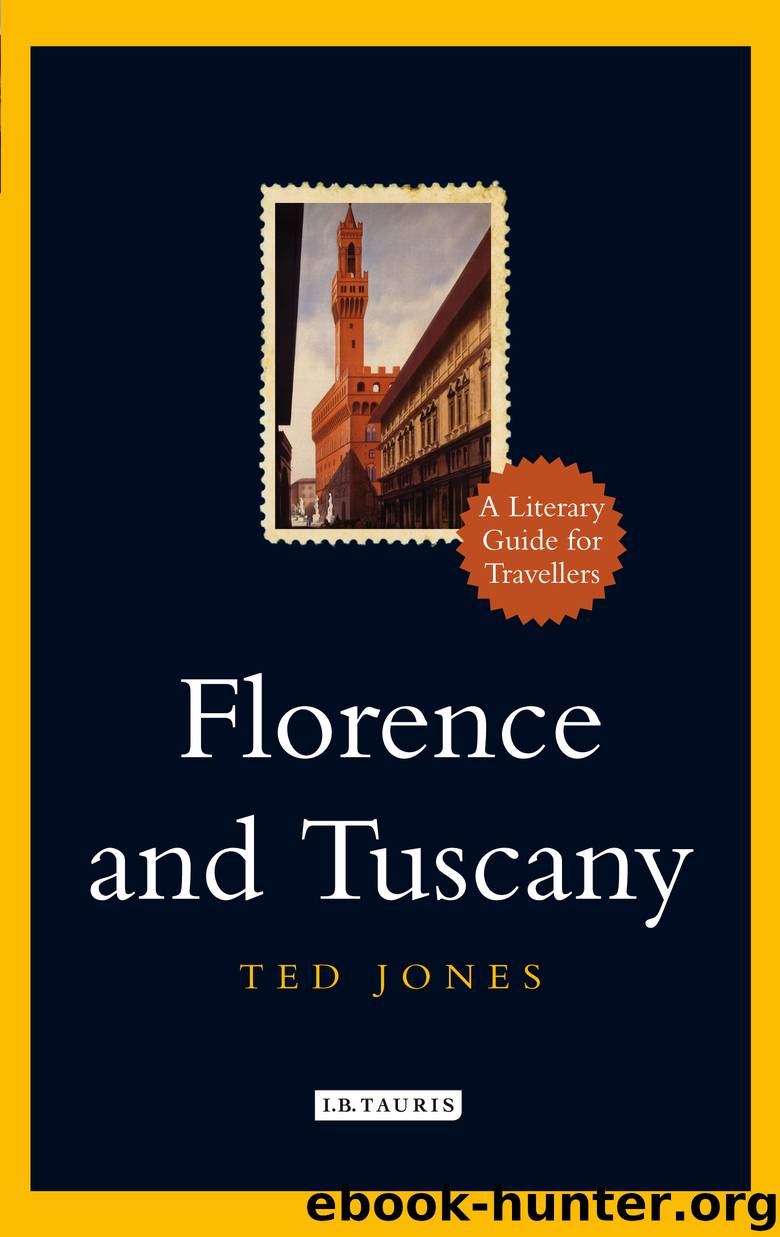Florence and Tuscany by Jones Ted;

Author:Jones, Ted;
Language: eng
Format: epub
Publisher: I. B. Tauris & Company, Limited
Published: 2012-10-23T16:00:00+00:00
4
Lucca
The Romantic City
A city overflowing with everything that makes for ease, for plenty, for beauty, for interest and for good example.
(Henry James, Italian Hours)
As the train approached Lucca, I was looking for typical Tuscan flora – vineyards, olive trees and sunflowers – but the approach to Lucca is not typically Tuscan. If I could reach a hand out of the window, I would grab handfuls of the tall maize that brushes the train. Yet the city itself is all that one expects of a truly Tuscan city, sheltering behind its 4 kilometres of unscalable ramparts. Etruscan relics abut Roman remains; medieval columns support Gothic buildings and Renaissance palaces. It is a city of open squares and Romanesque churches – the city that Henry James, who loved it, described as ‘pre-eminently a city of churches; ecclesiastical architecture being indeed the only one of the arts to which it seems to have given attention’.
In the vast Piazza Napoleone stands the statue of a toga-clad Maria Louisa, the Habsburg second wife sought by Napoleon Bonaparte after he divorced his first, Josephine de Beauharnais, for failing to give him a son and heir. Maria Louisa did produce a son, whom Napoleon pronounced King of Italy at birth, but he was a frail lad whose pampered life ended with his death from tuberculosis at the age of 21.
Lucca became an independent state in the twelfth century and prospered, not just from its abundant crops, but also from early trading – mostly with England – first in wool and fine silks and later in olive oil and wine. The city also had military links with England: in 1364, during the long wars against Florence, Sir John Hawkwood, the mercenary leader from Essex, contracted to dedicate his troops to the defence of Lucca against any forces except those of the King of England. The arrangement must have suited the commune, because in 1375 a grateful Lucca awarded Hawkwood a generous honorarium and made him a freeman of the city.
The first literary migrant to visit Lucca was the French philosopher and essayist, Michel Eyquem de Montaigne, who came to Lucca seeking relief in the nearby thermal baths from the inherited complaint of kidney stones. He had set off from home in 1580 and had visited the watering places of France, Germany, Austria and Switzerland without success, so the following year, leaving no stone unturned, he came to Bagni di Lucca – the Baths of Lucca – a popular watering resort some 20 kilometres north-east of the city. Montaigne preceded the first English writer in Lucca, the poet John Milton, by half a century. Milton addressed the academy there in 1639, and established academic links between Tuscany and Britain that exist today in such organisations as the British Institute of Florence.
Many years later, after the Second World War, the English travel writer Eric Newby and his wife came to Lucca and took the opportunity to taste its waters: ‘whenever we visited it’, said Newby, ‘and it was a fascinating
Download
This site does not store any files on its server. We only index and link to content provided by other sites. Please contact the content providers to delete copyright contents if any and email us, we'll remove relevant links or contents immediately.
| African | Asian |
| Australian & Oceanian | Canadian |
| Caribbean & Latin American | European |
| Jewish | Middle Eastern |
| Russian | United States |
4 3 2 1: A Novel by Paul Auster(11957)
The handmaid's tale by Margaret Atwood(7542)
Giovanni's Room by James Baldwin(6937)
Asking the Right Questions: A Guide to Critical Thinking by M. Neil Browne & Stuart M. Keeley(5470)
Big Magic: Creative Living Beyond Fear by Elizabeth Gilbert(5449)
Ego Is the Enemy by Ryan Holiday(5073)
On Writing A Memoir of the Craft by Stephen King(4730)
The Body: A Guide for Occupants by Bill Bryson(4705)
Ken Follett - World without end by Ken Follett(4511)
Adulting by Kelly Williams Brown(4341)
Bluets by Maggie Nelson(4338)
Eat That Frog! by Brian Tracy(4252)
Guilty Pleasures by Laurell K Hamilton(4182)
The Poetry of Pablo Neruda by Pablo Neruda(3886)
White Noise - A Novel by Don DeLillo(3866)
Alive: The Story of the Andes Survivors by Piers Paul Read(3808)
Fingerprints of the Gods by Graham Hancock(3801)
The Book of Joy by Dalai Lama(3765)
The Bookshop by Penelope Fitzgerald(3659)
